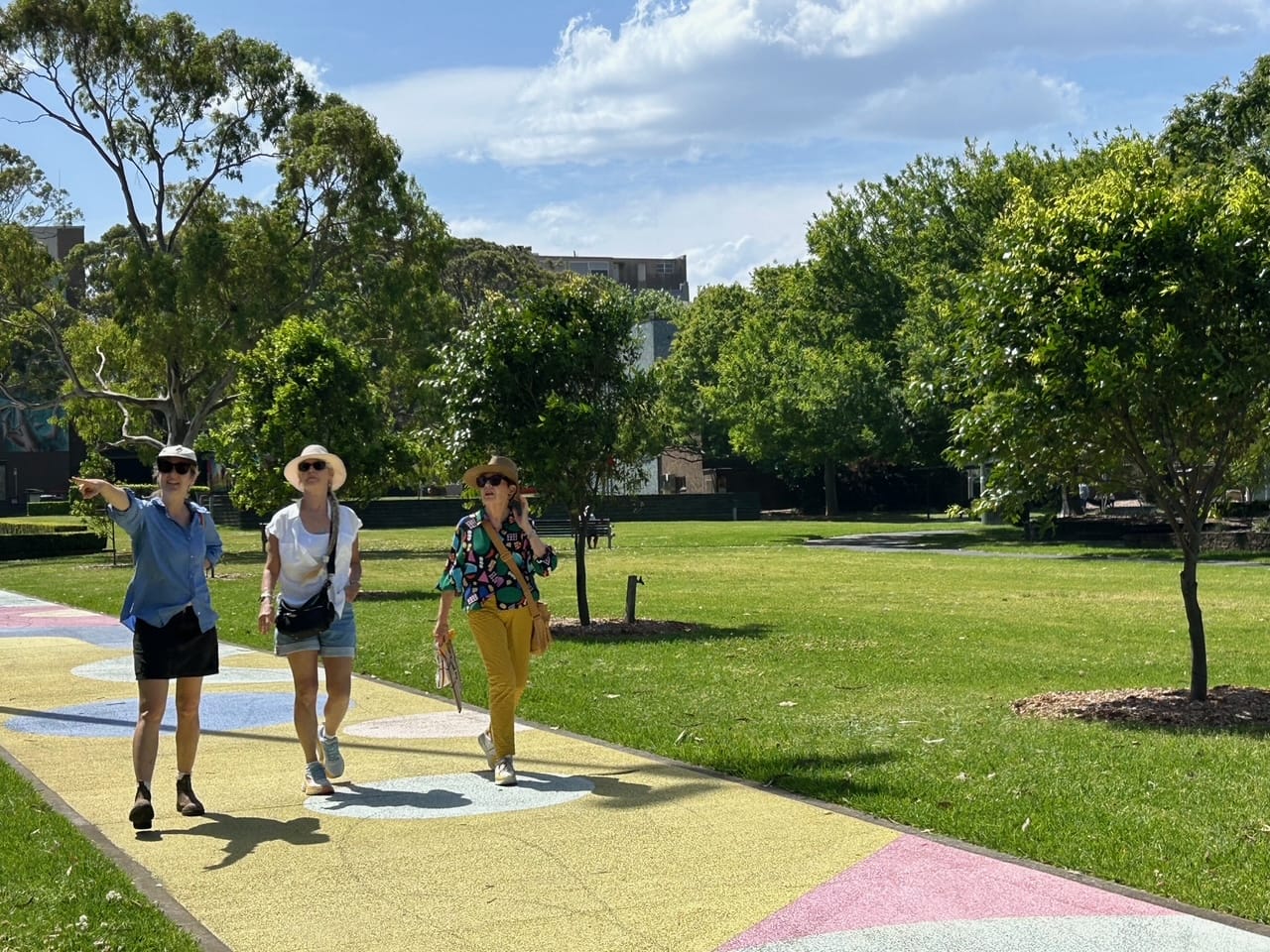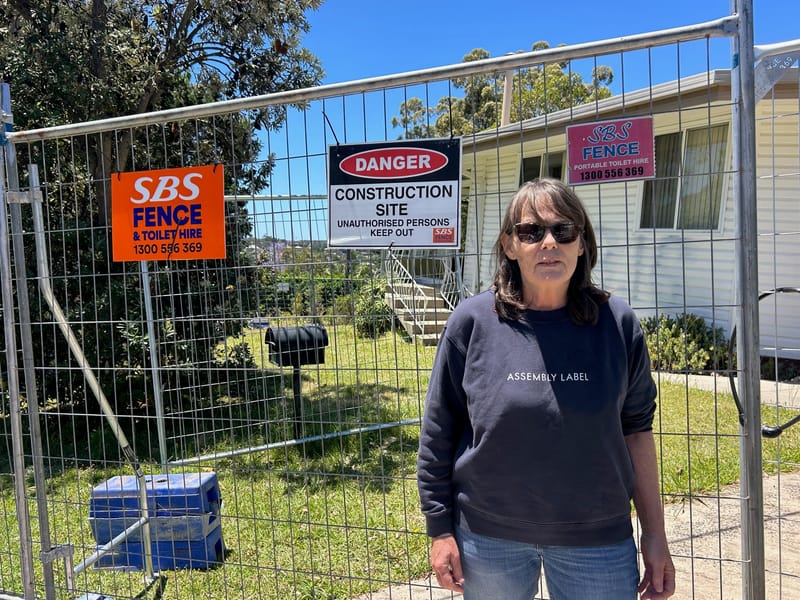Marking World Town Planning Day with a walking study to assess our city's hottest urban challenges
To mark World Town Planning Day on Saturday, 8 November, we explore the so-called 'heat island effect' in Wollongong CBD
Like the rest of the world, Wollongong is getting hotter. To mark World Town Planning Day tomorrow (Saturday, 8 November), in a two-part series The Illawarra Flame will explore the so-called 'heat island effect' in our CBD, joining three concerned locals on a stroll through the city to check out how we're coping, areas which provide the best opportunities for cooling, and areas where there's room for improvement.
Fittingly, the 2025 World Town Planning Day theme is "With Planning We Can", celebrating how good planning empowers communities.
Joining me on the CBD walkabout are town planner Dorte Ekelund; landscape architect Kathryn Morgan; and inner-city resident and retired risk management professional Patricia O'Brien.
The dangers of urban heating
To kick things off, the good news is that Wollongong Council is well aware of the risks presented by a city that's getting hotter year by year. In Australia, heatwaves are more deadly than other natural hazards that are often more prominent in our minds, such as bushfires, cyclones and floods. In Council's Urban Heat Strategy, it acknowledges "heatwave effects are often worse in cities, because hard surfaces such as bitumen can retain heat and drive-up temperatures (known as the 'heat island effect')".
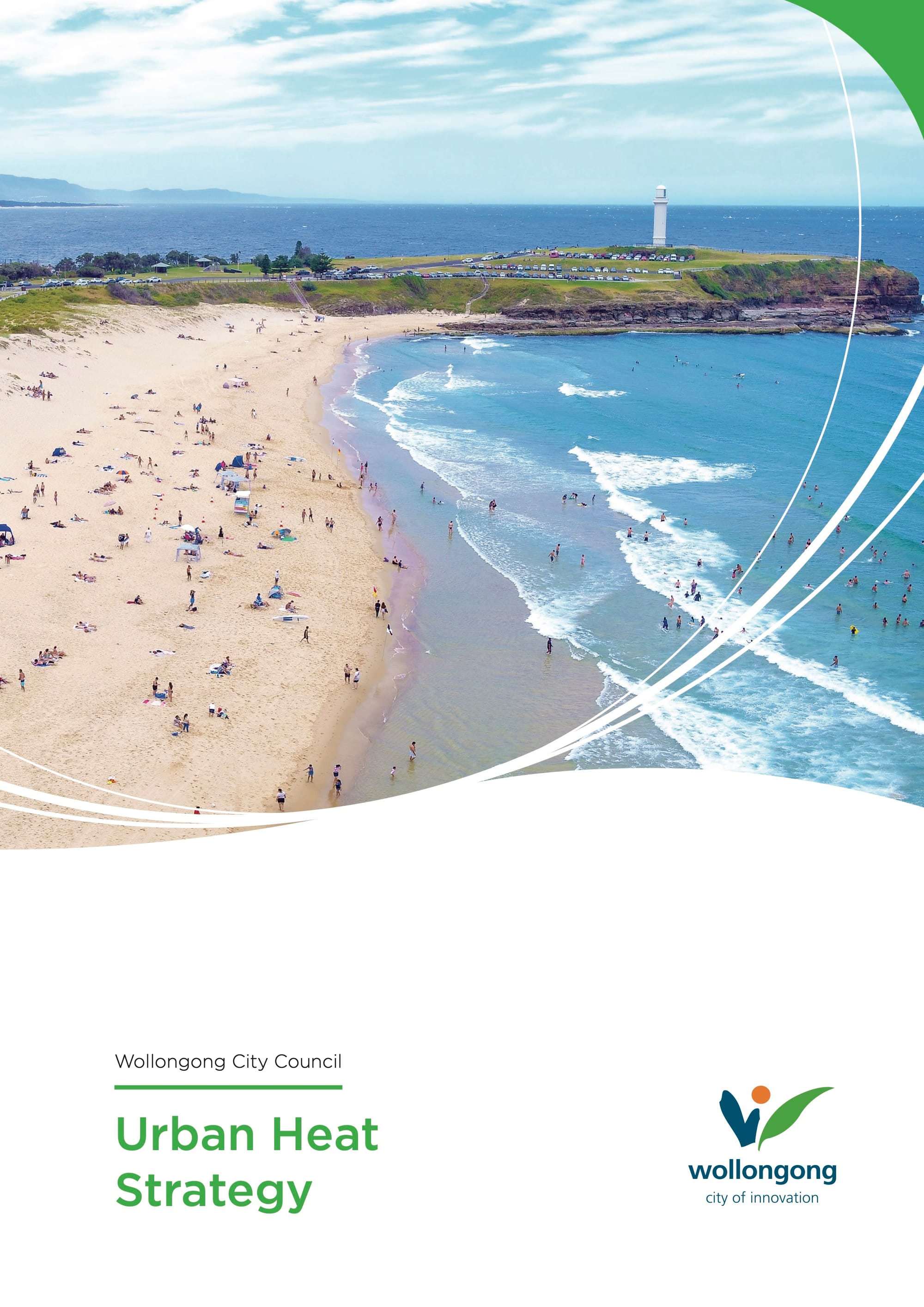

Council's Urban Heat Strategy and one of the best inner-city examples of how shade can cool an open space, Market Square.
Council's Urban Heat Strategy identifies Wollongong's CBD as one of the LGA's most serious heat "hot spots" in need of prioritisation. So, we used this as the starting point for our one-hour walking and talking exploratory tour of the city's heart.
As a city, what can we do to reduce the heat and create a cooler, more liveable environment?
What to do with MacCabe Park?
It seemed to make sense to start the walk in MacCabe Park and make this the focus of the first in our two-part series. Over the years, the much-loved MacCabe Park, the setting for Christmas and other celebrations, has been described as Wollongong's 'Central Park'. Our city's green lungs, just one block away from the heart of the CBD in Crown Street.
Right now, Council is asking for community feedback on plans to create a new skate park on the south-eastern section of the park. There is also a long-awaited master planning exercise for MacCabe Park that is expected to take place next year.

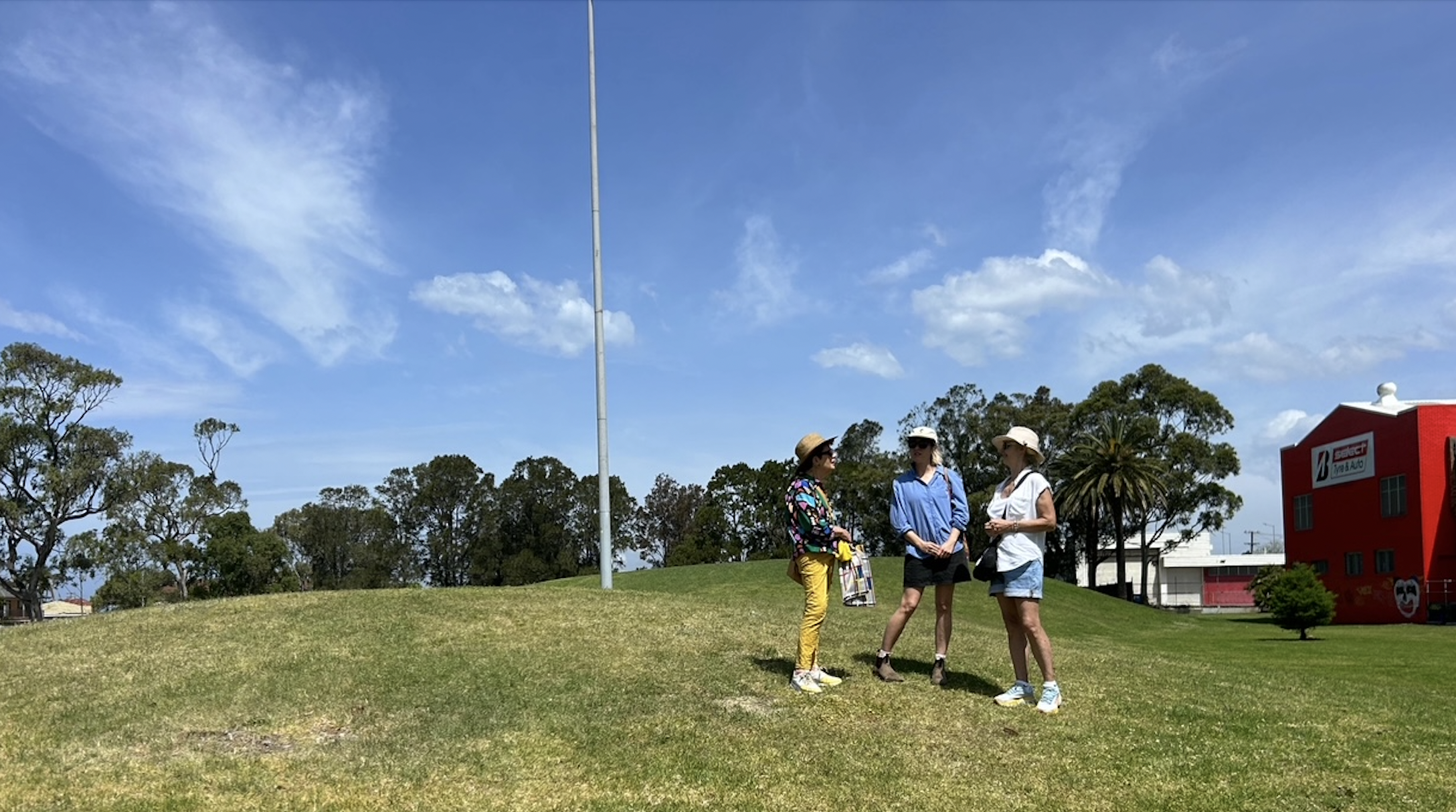
The area of MacCabe Park under consideration for a skate park; the trio discuss how great cities have great parks.
Patricia O'Brien, who has lived in an apartment building just a two-minute walk from the park since early 2022, values MacCabe Park as a precious green oasis in an urban area under growing development pressure.
"Great cities have great parks," Patricia says. "That Wollongong has the opportunity to make MacCabe Park 'great' will be addressed in Council's master planning strategy to be developed in 2026."
'Create a green density'
"We now have an urgent need to create a green density in the CBD to mitigate the heating effects of the hard concrete and glass surfaces that our rapidly increasing numbers of high-rise developments are creating," Patricia says.
She thinks plans, approved or currently with Council, for closing in on 1,000 new apartments in Keira, Kenny, Ellen and Atchison streets will only add to the heat effect, as older residential homes with gardens and green space make way for new hard-surface medium- and high-rise buildings.
"It's disappointing there isn't any compensatory greening to counter this intense development," Patricia says.
Patricia isn't a fan of the current proposal to remove a significant section of green space in the park to create a place for skateboarders. "I believe constructing a concrete skate park in this location would be poor environmental risk management."
She favours more green, not less. "I would love to see a tiny forest, other tree canopy plantings as well as green shaded picnic and leisure areas started immediately."
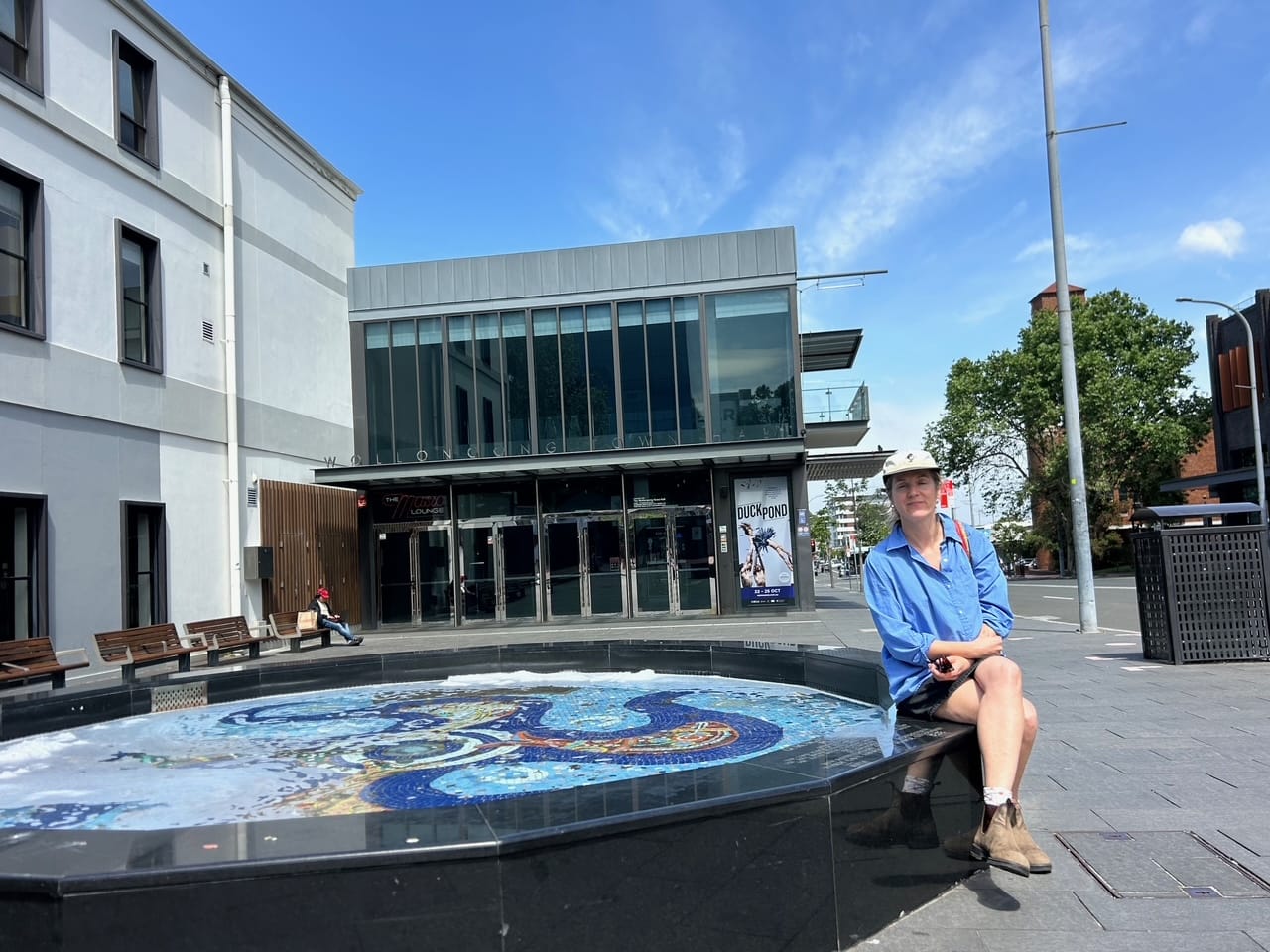
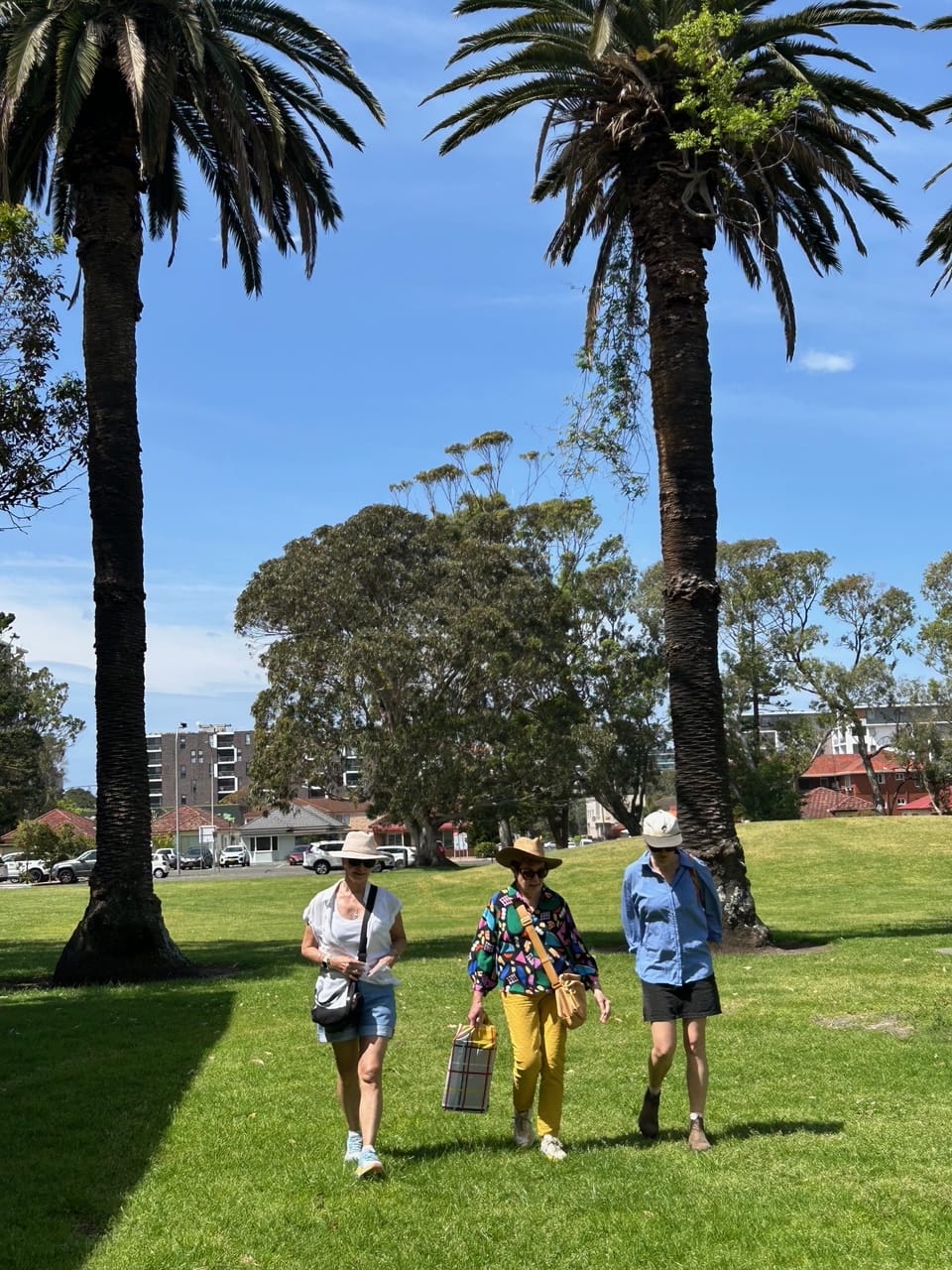
Kathryn says there’s a need for more water features such as the Garangaty Water Place in Crown Street; the trio look forward to participating in the Stuart Park master plan process.
Introduce water features to the park
All three on our walking tour suggested introducing water features into the park to make it cooler and more appealing for visitors.
"This area once held grassy woodlands, Red Gums, wetlands, and the flow of Garungaty Creek beneath what's now the CBD," Kathryn Morgan says.
"The nearby mosaic fountain, Garangaty Water Place, on the corner of Kembla and Crown Street, is a much-loved artwork by Aunty Lorraine Brown and Nick Brash – a great precedent for public art that makes room for Country and inclusive placemaking.
"Inclusion should extend to our more-than-human neighbours, birds, insects, and soil life," Kathryn says. "MacCabe Park is a precious green space but it's in need of canopy, biodiversity and water.
"I'm definitely excited for a skate park in Wollongong city, but it would be better if we could have a beachside site where hard surfaces already dominate, like the old bus depot. If MacCabe Park is chosen, design must start with Country and ecology; water-sensitive design, native plantings, rain gardens and habitat informed by Dharawal Traditional Owners."
Parks have multiple purposes
Dorte Ekelund says great inner-city parks generally serve a number of roles.
"Cool, green places within parks attract people for quiet enjoyment and reflection, catch up with friends, study, or for a lovely, peaceful lunch break away from the office," Dorte says. "MacCabe Park would benefit by more plantings, seating and picnic tables.
"Inner city parks usually also provide pathways that help people conveniently get from one part of the city to another, through pleasant green, shady places such as Market Square, rather than along busy, noisy roads which in summer are also hot environments with heat radiating off black road bitumen. Hyde Park in Sydney is also a great example of this.
"An understanding of the likely demand for paths (or desire lines) from the growing community around MacCabe Park should guide the locations of the pathways in and around the park. These pathways should have complementary canopy trees for shade and good lighting for personal security
"Inner city parks also, often, depending on their size, serve the important function of providing playground facilities for nearby communities, and events spaces. MacCabe Park is no exception here but will benefit by the anticipated master plan to give structure and clarity, and particularly a strong and ambitious vision for its future."
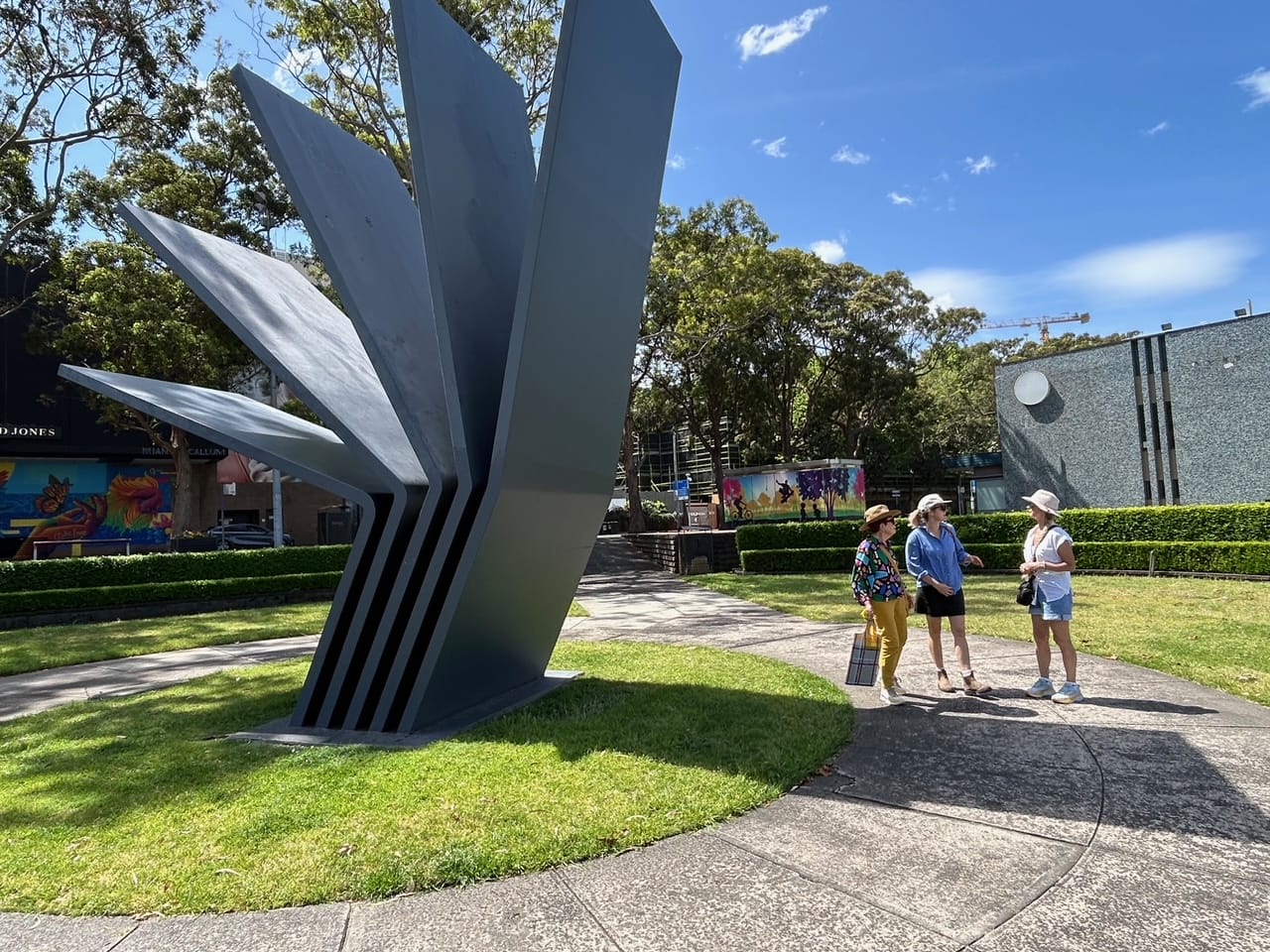
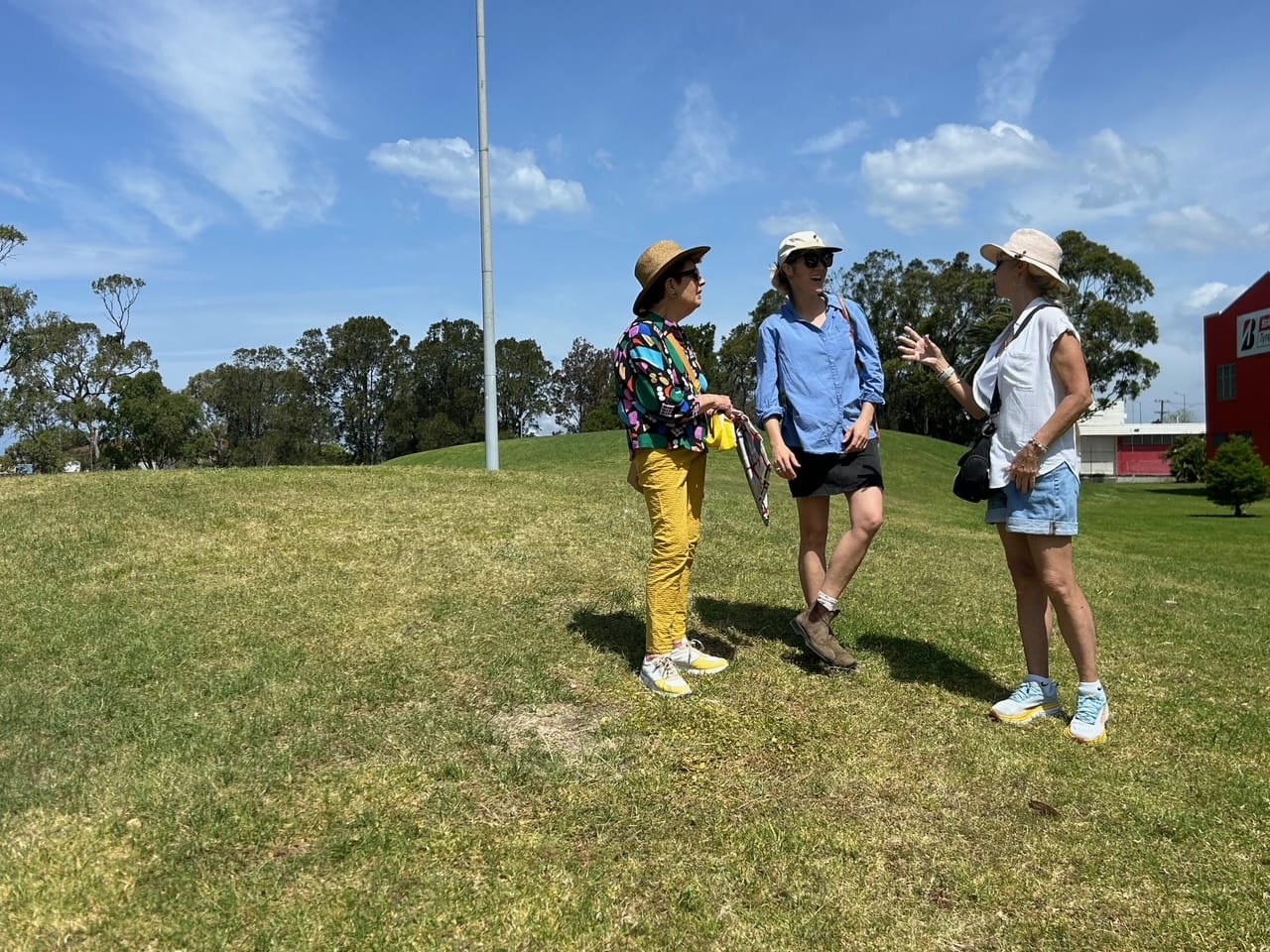
The Nike statue at the northern end of MacCabe Park; the three discussing a suggestions that the Bert Flugelman sculpture should sit atop the MacCabe Park mound.
Create a sculpture park
Dorte and Patricia would both welcome the addition of more sculptural elements in MacCabe Park to complement the striking steel structure Nike, which has stood proudly next to Burelli Street for more than 40 years. There hasn't been any sculpture added to the park in all those decades.
"We have the amazing Bert Flugelman sculpture Winged Figure, located on the side of Mount Keira, but it is hard to get to and most people don't even know it's there," Dorte says. "How amazing would it be if it was relocated to the top of the mound in MacCabe Park, watching over the city as Bert wished; but in its new location with a closer eye over the centre of the city?"
Dorte and Patricia agreed relocating and recommissioning the Illawarra Mercury Five Islands Fountain, an acclaimed sculpture that currently stands dry in Wollongong Botanic Garden, could provide MacCabe Park with another wonderful attraction.
"When operating, this is a striking water feature that would attract locals and visitors alike to enjoy its beautiful cooling waters, just as it did when it was located in the former Rest Park next to Globe Lane and Burelli Street," Dorte says. "It would make sense for a new city sculpture park to be under the auspices of the Wollongong Art Gallery."
The Illawarra Flame will present the second part of this World Town Planning Day feature next week.
Footnote: Dorte Ekelund, the former Director General of ACT Environment Planning and Environment and ACT Chief Planner, is married to the author, Jeremy Lasek.

